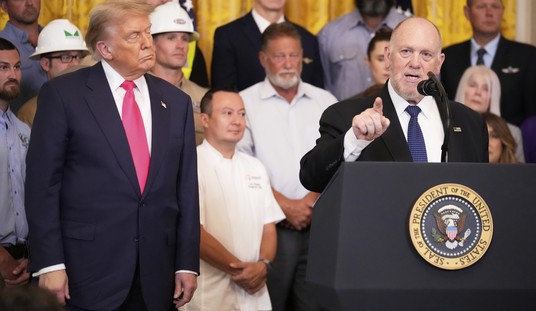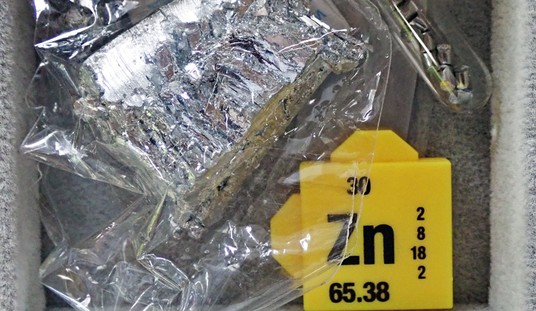
As we say in military briefings, “BLUF,” Bottom Line Up Front: It’s time to get the Veterans Administration out of the Medical Care Delivery business. I had promoted this idea a couple years ago, but an article by another RedStater named Sophia moved me to tune it up and hopefully get some attention with it. Sophia wrote a compelling article about having to deal with the VA and essentially ending up more traumatized than at the beginning of the process.
Here is my very modest proposal. First of all, to all my fellow veterans, I’m about to tip a sacred cow here. I would ask that for the sake of our many fellow warriors who need relief ASAP, please read this with an open mind and a willingness to offer tweaks, embellishments or outright different approaches.
Many of us can agree that the Veterans Administration has done a less-than-stellar job in delivering timely, high quality and cost-effective medical care, especially when it comes to “wait times,” for Veterans injured serving this great nation. However, there is one piece of good news in this situation–the American public is outraged about this situation and sincerely wants to help. This gives us a window of opportunity and leverage to achieve major changes, something historically, very difficult to do in the DC bureaucracy.
An intermediate solution now in place, has its own issues. In response to the public furor over Veterans’ Health Care, the Obama Administration initiated the “Veterans Choice” initiative, which President Trump has followed up on and expanded. This allows Veterans to seek service outside the VA if there is expected to be a long wait period for internal service. This sounds good, but a longtime friend and fellow vet wrote the following about this:
If you are considering Veterans Choice with the VA, think long and hard. I am out and here is why.
1. Referrals- the system is totally broken. requests for referrals are sent by primary care VA choice doctor to the VA and then supposedly approved and placed in your file so you can schedule an appointment.
I had one sent in October, never happened. then I got the actual phone number for the person who should have approved, called and reached her, she approved and said it would be in my file the next day. Two weeks later still no joy.2. Primary care VA choice doctor- I had 24 visits approved for him as just a regular doctor. I made an appointment for Friday and was told he dropped out of the program. The reason was, he never got paid. So, I would have to re enter the VA choice, select a new doctor, go to him for the initial visit, go through the hassle of having all my records transferred to this new doctor and then hope this doctor would decide to stay with the program. Not happening.
Admittedly, this is but one anecdote, but it does showcase the continued tension between prompt, effective treatment for a Veteran, and the fiduciary responsibility of all government agencies to safeguard public funds.
A more recent solution being bandied about is to “just give the veterans a card and let them use that to get service at the private facility of their choice.” At first blush, this sounds like the perfect solution. Give the Veteran a “Medical Charge Card” that lets him seek medical care in the private economy, while the government simply writes the checks as in Medicare. After a little reflection, however, we can see that the costs for such could rapidly spiral out of control.
Moreover, there would be a greater than normal risk of fraud, waste, and abuse. Sad to say, this could have the American taxpayer paying for illnesses & injuries not resulting from military service. We don’t want to burn up public goodwill as we saw happen with the Wounded Warrior Project. In my humble opinion, only the decisive act of hiring a well regarded, retired Army 3-Star General (and former roommate of mine) to bring some order and discipline into its spending practices, was able to restore the Wounded Warrior Project’s reputation.
We want to enact our reform of the VA and get it right the first time–and quickly. What we need, is a system that identifies Veterans eligible for VA-funded care, identifies the specific care they are eligible for, adequately funds that care and does those things in a timely and cost-effective manner while minimizing the potential for abuse.
To that end, the first thing we need to do is get the VA out of the Medical Care Delivery part of Veterans’ Medicine. The VA should be limited to determining the extent of the injury/illness, service connection of that injury/illness and disability rating resulting from service-connected injuries/illnesses. After that, another entity should take over to ensure delivery of treatment and payment for that service–TRICARE
TRICARE is the health care management/payment system that takes care of Active Duty Military (when not being treated in a military facility) selected Reservists & their dependents, along with military retirees. TRICARE manages the administration & payment to health care providers for all of the above categories–each of which is entitled to a different level of coverage/payment. For example, an Active Duty Army Staff Sergeant being treated by a civilian specialist will usually have 100% of the cost covered. That same Staff Sergeant, now retired, will be able to get the same treatment, but will have to pay a modest co-pay. The TRICARE computer management algorithm(s) know the difference.
The above data management capability makes TRICARE, an existing system that works, the ideal choice to ensure disabled Vets get the treatment they need and are entitled to. Instead of the billions of dollars we spend to fund the overhead and facility costs of Veterans’ hospitals and treatment clinics, those funds could instead be allocated to TRICARE to pay for actual medical treatment. This would result in lower overhead costs and hence more money for actual treatment and best of all, a much more rapid response time.
Here’s how it could work:
TRICARE’s algorithm would need to add and differentiate between the following categories of Veterans:
Cat 1: A disabled Veteran who is also retired from the military, either medically or by virtue of length of service.
Cat 2: A disabled Veteran who has been separated from the military, but not for medical reasons or via retirement. This Veteran is your typical patriotic American who has honorably served one or more military enlistments but has decided to pursue civilian opportunities instead of a twenty (or more) year career in the Military. However, he does have one or more souvenirs of his military service; souvenirs the American public has the legal and moral obligation to pay for.
Differentiating between these two categories is critical in order to execute a dual-use system as proposed above. At the Secretary level in the US Government, which pot of money pays for what service, is a big deal. Although TRICARE would manage physician reimbursement in both categories, the differences between the two above categories, would determine which agency would refund TRICARE, the Veteran’s Administration or the Department of Defense.
Here are two examples:
Case 1: A disabled Veteran who is retired from the military goes to his Family Practice provider for two issues, a head cold and recurring pain from a service-connected knee injury. As a military retiree, he would pay a partial copay for the head cold portion of his Family Practice visit, while DOD, through TRICARE would pay for the reimbursement. The VA would pay TRICARE 100% of the reimbursement, including the copay, for the part of the visit and any subsequent referrals for the knee pain. Put more tersely, this appropriately splits the cost of treatment between the VA and DOD.
Case 2: A disabled Veteran who is honorably separated from the military, but not via retirement, goes to that same Family Practice doctor for the same two complaints. In this case, our Veteran will pay either out of pocket or via private insurance, the cost associated with his head cold. The VA however, will through TRICARE, pay 100% of the costs associated with the knee pain.
What will enable this to work, are advances in data-driven technology. Up until not too many years ago, the degree of granularity required as to what treatment would be authorized for payment would be difficult to achieve in a distributed system. With advances in automation in the medical billing industry, it would be quite simple for the VA to issue a TRICARE ID card to eligible Veterans. Such a card would be tied to a discrete “account” for each Veteran that would contain all of the treatment codes authorized for that Veteran based on his service connected illnesses/injuries. For Veterans who are retired from the military, the VA can easily transmit this treatment code info to TRICARE so its computer algorithm can properly assign costs for treatment–VA or DOD.
I have spent a significant amount of space in this article, on what my fellow “shooters,” would call “bean counter stuff.” At first blush, our instinct is to say, “Damn the cost! Do whatever it takes to help our Vets!” However, such an open-ended system would be ripe for abuse, which in turn could burn up a lot of goodwill for the troops on the part of the American taxpayer. We’re only going to get one chance to get this right before a historically shortsighted electorate moves on to other things.
With an intent to follow the example of our great President, I hereby offer my services to the Veteran’s Administration, for a salary of $1.00/year, to help develop and implement such a program.
Mike Ford is a retired Infantry Officer who writes on Military, Foreign Affairs and occasionally dabbles in Political and Economic matters.
You can find his other Red State work here.
He is also (reluctantly) on Twitter: @MikeFor10394583













Join the conversation as a VIP Member